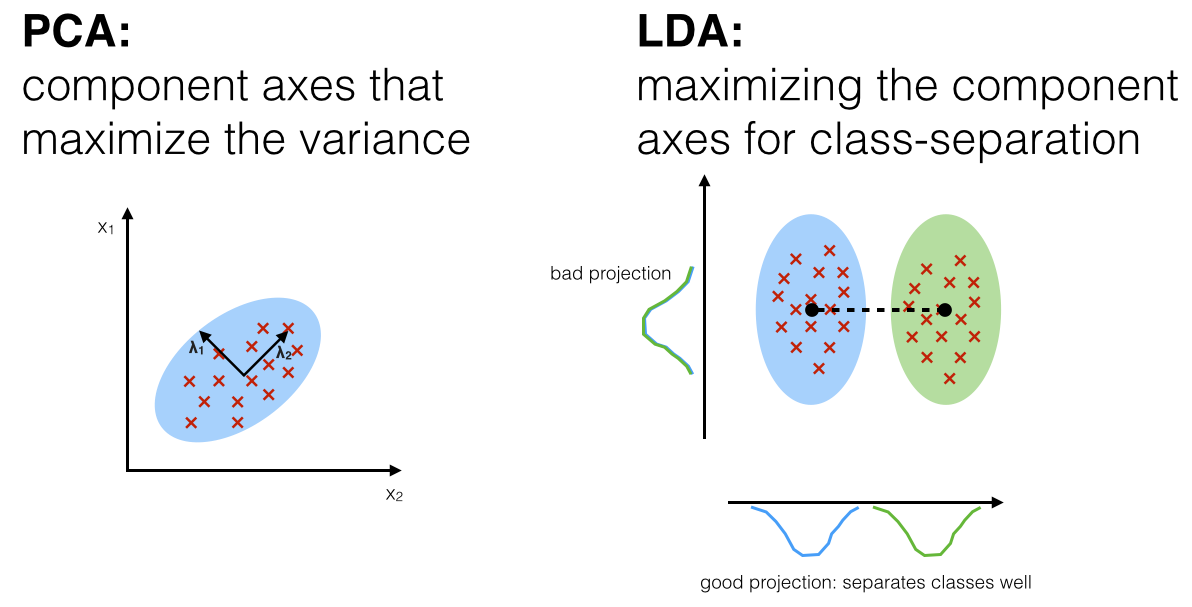Linear Discriminant Analysis
Mis à jour :
LDA is closely related to PCA as it is linear.
PCA, the transformation is baed on minimizing mean square error between original data vectors and data vectors that can be estimated fro the reduced dimensionality data vectors
LDA, the transformation is based on maximizing a ratio of “between-class variance” to “within-class variance” with the goal of reducing data variation in the same class and increasing the separation between classes.
Here is the graphic intuition:

Goals:
- Obtain a scalar y by projecting the samples X onto a line:
- Find $\beta^{*}$ to maximize the ratio of “between-class variance” to “within-class variance”.
1. Two classes problem
1.1. Head the problem
Mean-class vector: Mean vector of each class with its projection
Between-class variance: a measure of separation between two classes is to choose the distance between the projected means, which is in y-space
Within-class variance: Variance of the elements of the $k$-th class relative to its mean
Objective function: We are looking for a projection where examples from the class are projected very close to each other and at the same time, the projected means are as farther apart as possible. Naturally:
1.2. Transform the problem
Goal: We need to express $J(\beta)$ as a function of $\beta$:
Scatter in feature space-x: Measure of how the points are spread away from the mean of a given class
Within-class scatter matrix: Total scatter of all classes
Between-class scatter matrix: Distance Matrix of the class means
Objective function reformulation: With these notations, we obtain:
1.3. Solve the problem
Fisher’s linear discriminant: By setting the derivative to zero we obtain:
2. Multi class
| Goal: seek $(C − 1)$ projections $[y_{1}, y_{2}, . . . y_{C−1}]$ by means of $(C − 1)$ projection vectors $\beta_{i}$ arranged by columns into a projection matrix $\Theta = [\beta_{1} | \beta_{2} | . . . | \beta_{C−1}]$, where: |
2.1. Objective function
We obtain similarly (proof):
Goal: seek the projection matrix $\Theta^{*}$ that maximize this ratio.
Fisher’s criterion: is maximized when the projection matrix $\Theta^{*}$ is composed of the eigenvectors of:
and under the assumptions that $S_{W}$ is
- Non-singular matrix
- Invertible
LDA and dimensionality reduction: Noticed that, there will be at most $(C−1)$ eigenvectors with non-zero real corresponding eigenvalues $λ_{i}$. This is because $S_{B}$ is of rank $(C − 1)$ or less. So we can see that LDA can represent a massive reduction in the dimensionality of the problem.

Laisser un commentaire